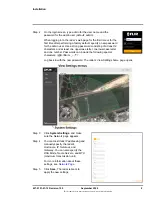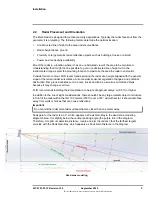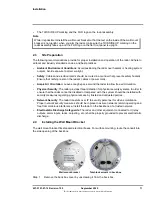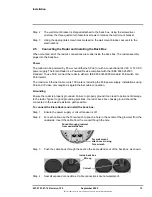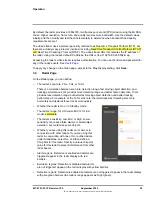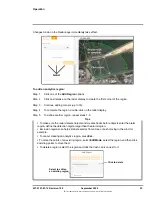
427-0101-01-12 Revision 100
September 2020
10
This document does not contain any export-controlled information.
Installation
To improve detection of closer targets, you can aim the radar lower, at the expense of detecting
targets further away. For example, at a road intersection when detecting close-range pedestrians
and cyclists is more important than detecting cars 500 meters away.
The diagrams below show the radar’s dead zone distances according to vertical pointing angle at
mounting heights of 4 m and 6 m (20 ft). The distances are for flat ground with no slope.
To provide full radar coverage for a sector, the ranges of two or more radars might overlap. After you
configure them so that their radar frequencies do not interfere with other on the
, you can
configure an Elara Radar to fuse tracking information from one or more other Elara Radars with its
own tracking information; see the
. With accurate georeference information
configured, the radar performing the fusion can determine whether it and a fused radar are tracking
the same object; see
Uploading a Map Image and Configuring Georeference Settings
.
You can mount the radar directly on a wall or, using an optional mounting accessory, in a corner or
onto a pole. Ensure that the radar is on a stable mount with minimal vibrations and resistance to
wind. For information about the mounting accessories available for the Elara Radar, see the
FLIR
Security Cameras - Accessory Guide
.
Regarding orientation, note the following:
•
The two guide pins on the radar assembly that fit only one way into the corresponding holes on
the back box.
•
There are three possible ways to secure the back box onto the wall mount bracket. However,
only one way allows you to route a conduit into the side opening of the back box and cable from
the conduit through the grommets, for surface mounting.
•
The text stamped on the inside of the wall mount bracket that indicates the appropriate screw
holes for different types of electrical boxes.
Dead zone distances vs. vertical pointing angle - 4 m mounting height
Dead zone distances vs. vertical pointing angle - 6 m mounting height













